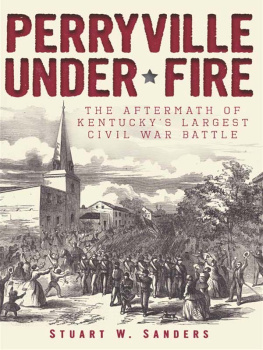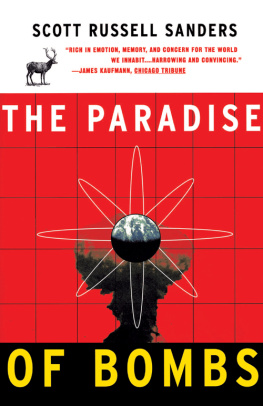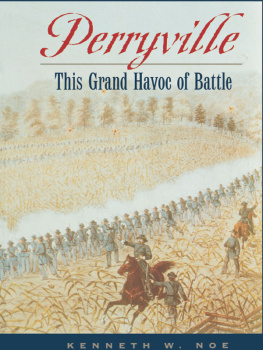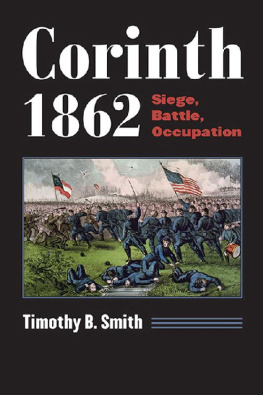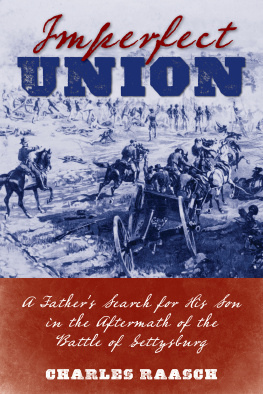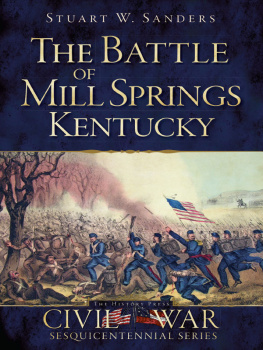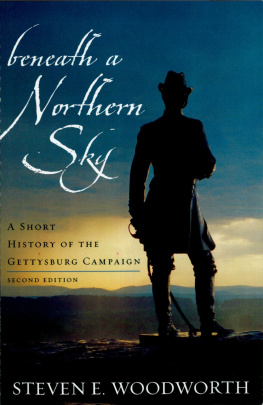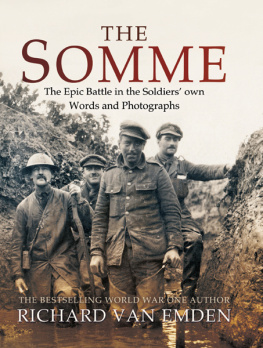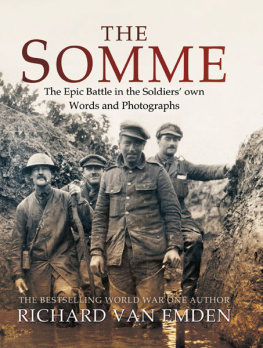

Published by The History Press
Charleston, SC 29403
www.historypress.net
Copyright 2012 by Stuart W. Sanders
All rights reserved
Cover image: The 9th Indiana Infantry marching into Danville, Kentucky, following the Battle of Perryville. From Harpers Weekly.
First published 2012
e-book edition 2012
ISBN 978.1.61423.469.2
Library of Congress Cataloging-in-Publication Data
Sanders, Stuart W.
Perryville under fire : the aftermath of Kentuckys largest Civil War battle / Stuart W. Sanders.
pages cm
Includes bibliographical references and index.
print edition ISBN 978-1-60949-567-1
1. Perryville, Battle of, Perryville, Ky., 1862. 2. Perryville, Battle of, Perryville, Ky., 1862--Influence. 3. Perryville, Battle of, Perryville, Ky., 1862--Social aspects. 4. Perryville (Ky.)--History--19th century. I. Title.
E474.39.S25 2012
973.733--dc23
2012000023
Notice: The information in this book is true and complete to the best of our knowledge. It is offered without guarantee on the part of the author or The History Press. The author and The History Press disclaim all liability in connection with the use of this book.
All rights reserved. No part of this book may be reproduced or transmitted in any form whatsoever without prior written permission from the publisher except in the case of brief quotations embodied in critical articles and reviews.
CONTENTS
ACKNOWLEDGEMENTS
On October 8, 1862, more than 7,500 Union and Confederate troops were killed and wounded outside of Perryville, Kentucky. This battle proved to be the Bluegrass States largest, and many veterans remarked that it was the most intense fight that they ever experienced. Nearly every barn, home, shed, stable, business, school and church became makeshift hospitals, and the burden of caring for the massive number of casualties fell upon Perryvilles 300 inhabitants and the residents of other nearby communities. Union doctors were woefully unprepared for the large number of injured soldiers. A drought and lack of anesthesia accentuated the suffering, and delayed burials made the battlefield a horrific environment. The day after the fight, Henry Fales Perry of the 38th Indiana Infantry Regiment aptly described the scene. The spectacle presented by the battlefield was enough to make angels weep, he lamented. It beggars all description.
For nearly a decade, I was fortunate to work for the Perryville Battlefield Preservation Association, a not-for-profit organization charged with preserving and interpreting Kentuckys largest Civil War battleground. During my time there, my office was located along the towns nineteenth-century commercial district. Therefore, I had ample time to reflect on what soldiers, civilians and surgeons experienced. I also became curious about what happened to the town and region once the firing stopped. This book hopes to answer that question, and numerous friends and colleagues have helped along the way.
First, I must thank Captain Robert C. Peniston, U.S. Navy, retired, for giving me my first job in the field of Civil War history. Captain Peniston hired me as a docent at the Lee Chapel in Lexington, Virginia, when I was sixteen years old. He has been a wonderful mentor, friend and generous role model who helped lead me into the field of public history. I am thankful for his guidance and lifelong friendship.
Much appreciation goes to the board of directors of the Perryville Battlefield Preservation Association (PBPA) and the Perryville Battlefield Commission. I especially thank former board presidents Kent Masterson Brown, Don C. Kelly and Dr. Clarence Wyatt for their support during my tenure there. David L. Morgan, former executive director of the Kentucky Heritage Council, was also a mentor and friend. Alan and Arleen Hoeweler have also been incredibly generous, from allowing me to stay at the historic H.P. Bottom House when I began working in Perryville to letting my wife and me use that incredible house for our wedding reception. Special thanks also go to Darrell Young, one of the first people I met in Perryville, who has incredible insight about the battle and the aftermath. Tours of the region with him were always greatly appreciated.
I am also grateful to my friends at the Kentucky Department of Parks, the Kentucky Heritage Council and the many Kentucky Civil War sites and state agencies who generously helped me during my time in Perryville. Others include former colleagues Bobby Joe Ellis, Krista Rinehart and Jacky Thomas, Kay Berggren, Lisa Bottom, Sue Bottoms, Joe Brent, Dwight Conley, Carolyn Crabtree, John Downs, Harold Edwards, Tom Fugate, Ren Hankla, Scott Hankla, Joni House, the late Brooks Howard, Nicky Hughes, Sherry Jelsma, Mary Lynn, Mary Quinn Ramer, Bruce Richardson, Richard Stallings, Roger Stapleton, former Boyle County judge executive Tony Wilder, the late Bill Wilson and many more. After spending nearly ten years in Perryville constantly relying on myriad people and agencies, there are too many people to thank here. For those I have failed to mention, please know how I have appreciated your support and friendship.
I am now thankful and honored to still work in the public history field in the Commonwealth of Kentucky. Many thanks are especially due to my boss, Kent Whitworth. Appropriately, I first met Kent on the Perryville battlefield, and I am grateful for his encouragement, trust and support. Additional thanks go to my other colleagues, who are too numerous to mention. Please know how much I enjoy working with you.
Several friends and archivists helped with supplying illustrations. Many thanks to Andre Brousseau, Old Crow Inn (Danville); Bob Glass, Centre College; Jennifer Duplaga, Kentucky Historical Society; JoAnn Hamm, Kentucky School for the Deaf; Russ Hatter, Capital City Museum (Frankfort); Kurt Holman, Perryville Battlefield State Historic Site; Joanie Lukins; Susan Lyons Hughes, Shaker Village at Pleasant Hill; Jim Miller; Jean Kernen Moses; Elizabeth and Robert Orndorff; Bruce Richardson, Elmwood Inn (Perryville); Jerry Sampson; Reverend Jim Stewart, Presbyterian Church of Danville; and Kelli Thompson, Kentucky Historical Society.
I am also grateful for supportive friends Erik Drake and Mignon Brousseau, Brian Grimmer, Steve and Amy Isola, Andrew McNeill, John and Andrea Mesplay, Mark Read, John Walsh, Robert H. Williams and W.L. Wilson. With additional gratitude to my in-laws, Gary and Cindy Neighbors, Brian and Heather Neighbors, D.C. and Virginia Neighbors and John and Evelyn Renner. Appreciation for my brother, Wallace Sanders, and my sister-in-law, Catherine Edwards Sanders.
The generosity of Dr. Kenneth Noe, author of Perryville: This Grand Havoc of Battle, who donated his research files to the Perryville battlefield, greatly assisted this project. Robert Ellis, archivist at the National Archives and Records Administration in Washington, D.C., was instrumental in finding war claims pertaining to institutions that were damaged after the battle.
I am also grateful to Will McKay, my editor at The History Press, and the rest of the staff there who have helped make this project possible.
Importantly, this project would not have been possible without Kurt Holman, manager of the Perryville Battlefield State Historic Site. No one knows the Battle of Perryville as well as Kurt, and I am grateful for his expertise, his generosity with his research files and his suggestions to this manuscript. His insight has been invaluable, and I appreciate his support and friendship.
Next page
